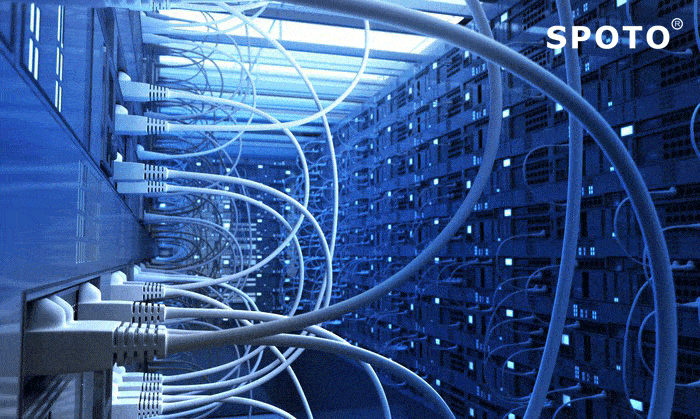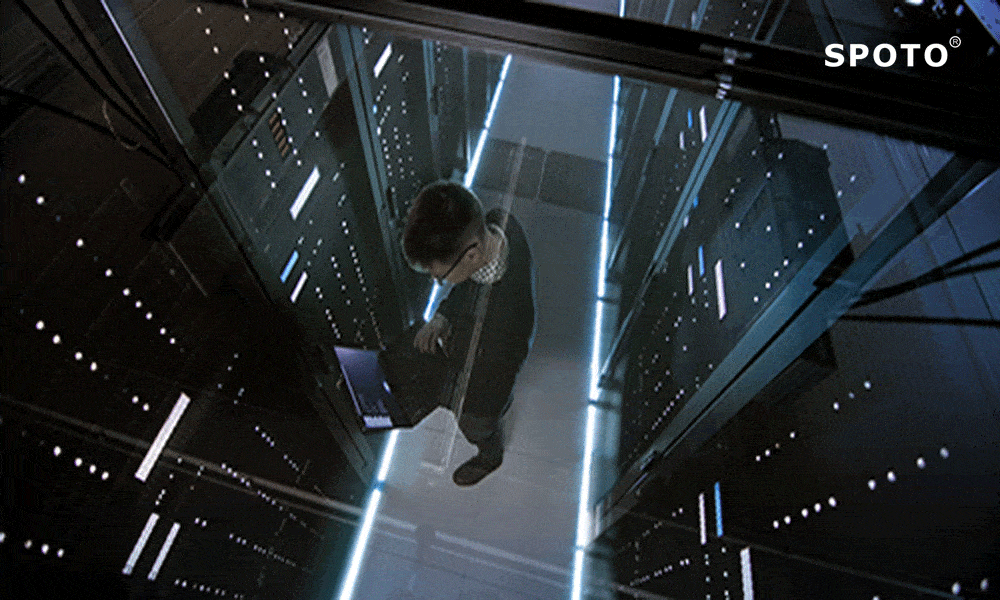-
- SPOTO CCIE RS LAB Dumps
- SPOTO Club
- 2024-01-18
The CCIE Routing and Switching (R&S) Lab Exam is an 8-hour, hands-on examination that tests a candidate's ability to configure and troubleshoot complex networks according to given specifications. In this CCIE R&S lab exam, troubleshooting skills are paramount, as candidates must diagnose and resolve various issues presented during the exam. Candidates are responsible for configuring not only end-user systems but also all devices within the network.
CCIE R&S Lab Exam Format
The 8-hour lab exam consists of three modules that must be completed in the following progression:
Module 1: Troubleshooting
The Troubleshooting module presents independent incidents that require resolution. The topology used in this module differs from the ones used in the Configuration module. This module lasts 2 hours, but candidates can borrow up to 30 minutes from the Configuration module if needed. Conversely, any unused time from the Troubleshooting module is added to the Configuration module's time, ensuring a total lab exam time of 8 hours.
Module 2: Diagnostic
The new Diagnostic module focuses on the skills required to properly diagnose network issues without direct access to devices. Candidates are provided with documentation representing a realistic scenario, simulating a network engineer's investigation process. The objective of this module is to assess the following skills:
- Analyzing
- Correlating: Discerning multiple sources of documentation, such as email threads, console outputs, logs, network topology diagrams, and traffic captures.
These activities are part of overall troubleshooting skills but are evaluated separately due to the different format of the items compared to the Troubleshooting module, where candidates troubleshoot and resolve issues on actual devices.
Module 3: Configuration
The Configuration module presents a setup similar to an actual production network with various security components providing multiple layers of security at different points. While primarily based on virtual instances of Cisco appliances, candidates may also work with physical devices. At the beginning of the module, candidates are given full visibility of the entire module and can choose to resolve items in the presented sequence or in a preferred logical order.
To gain more insights and prepare effectively for the CCIE R&S Lab Exam, consider joining a reputable training provider like SPOTO, which offers comprehensive CCIE training and resources.
-
- SPOTO CCIE RS LAB Dumps
- SPOTO Club
- 2024-01-18
Before we move on what would be there in the Layer 2 of CCIE Routing and Switching Lab Exam, let’s first have a brief overview of what is CCIE R&S.
CCIE Routing and Switching:
CCIE Routing and Switching certification are designed specifically for the network managers, senior network engineers, professionals, as well as architects who would be considered as responsible for implementing and troubleshooting today’s multifaceted congregated networks in enterprise networking environments.
This expert-level certification recognizes that the course taker has acquired the knowledge and experience in network infrastructure technologies. CCIE Routing and Switching are going to validate the technical expertise which would be required for the candidates to implement and troubleshoot complex networks and would help them to improve network uptime, which would again increase user productivity as well as provides business agility. CCIE R&S Certification could quite be gruesome to obtain, but if you have the help of some good training providers like the SPOTO, you could ease up your study part, by their study dumps. Now, let’s discuss the CCIE R&S Lab Exam:
CCIE R&S Lab Exam
The CCIE R&S lab exam would be about eight-hour. This exam is considered to be hands-on exam which would be requiring the candidates to configure and troubleshoot a series of complex networks which would be given specifications. Knowledge of troubleshooting would play an important role here and candidates would be expected to diagnose and provide a solution to the issues as part of their CCIE R&S lab exam. You wouldn’t be just configuring end-user systems but would be also considered to be responsible for all devices that would be residing in the network.
Below mentioned are the details included in the Layer 2:
1.1 LAN switching technologies
1.1.a Implement and troubleshoot switch administration
1.a [i] Managing MAC address table
1.a [ii] errdisable recovery
1.a [iii] L2 MTU
1.1.b Implement and troubleshoot layer 2 protocols
1.b [i] CDP, LLDP
1.b [ii] UDLD
1.1.c Implement and troubleshoot VLAN
1.c [i] access ports
1.c [ii] VLAN database
1.c [iii] normal, extended VLAN, voice VLAN
1.1.d Implement and troubleshoot trunking
1.d [i] VTPv1, VTPv2, VTPv3, VTP pruning
1.d [ii] dot1Q
1.d [iii] Native VLAN
1.d [iv] Manual pruning
1.1.e Implement and troubleshoot etherchannel
1.e [i] LACP, PAgP, manual
1.e [ii] layer 2, layer 3
1.e [iii] load-balancing
1.e [iv] etherchannel misconfiguration guard
1.1.f Implement and troubleshoot spanning-tree
1.f [i] PVST+/RPVST+/MST
1.f [ii] switching priority, port priority, path cost, STP timers
1.f [iii] port fast, BPDUguard, BPDUfilter
1.f [iv] loopguard, rootguard
1.1.g Implementing and troubleshooting other LAN switching technologies
1.g [i] SPAN, RSPAN, ERSPAN
1.2 Layer 2 Multicast
1.2.a Implement and troubleshoot IGMP
2.a [I] IGMPv1, IGMPv2, IGMPv3
2.a [ii] IGMP snooping
2.a [iii] IGMP querier
2.a [iv] IGMP filter
2.a [v] IGMP proxy
1.3 Layer 2 WAN circuit technologies
1.3.a Implement and troubleshoot HDLC
1.3.b Implement and troubleshoot PPP
3.b [i] authentication [PAP, CHAP]
3.b [ii] PPPoE
3.b [iii] MLPPP
1.4 Troubleshooting layer 2 technologies
1.4.a Use IOS troubleshooting tools
4.a [i] debug, conditional debug
4.a [ii] ping, traceroute with extended options
4.a [iii] Embedded packet capture
1.4.b Apply troubleshooting methodologies
4.b [i] Diagnosing the root cause of networking issue [analyze symptoms, identify and describe root cause]
4.b [ii] Designing and implementing valid solutions as per the constraints
4.b [iii] Verify and monitor resolution
1.4.c Interpret packet capture
4.c [i] Using wireshark trace analyzer
4.c [ii] Using IOS embedded packet capture
If you wish to pursue the CCIE R&S Certification and are still confused about where to gain the knowledge and how you must check out the courses offered by the SPOTO.
-
- SPOTO CCIE RS LAB Dumps
- SPOTO Club
- 2024-01-18
What You Would be Learning in this Module:
There are 3 main options are available for migration to IPv6 from the existing network infrastructure, dual-stack network, translation, and tunneling. Here we are going to briefly discuss all of these options as well as highlights the advantages of translation and particularly stateful translation, over the other two.
Here we would be discussing the ways to provide a seamless Internet experience to users accessing IPv4 Internet services through completely new “greenfield” IPv6-only networks. We would be even describing how to establish content providers as well as content enablers could transparently provide existing or new services to IPv6 Internet users by deploying Network Address Translation IPv6 to NAT64 IPv4 technology with little or no change in their existing network infrastructure, thus it would also maintain business continuity.
We know, that lots of things are to be discussed, which again wouldn’t be able to discuss in here, but worry not! You could have it all, by joining the Lab Prep Courses offered by the SPOTO. Dual-Stack Network:
Dual stack is considered a transition technology in which IPv4 as well as IPv6 so as to operate in tandem over shared or dedicated links. In a dual-stack network, both IPv4, as well as IPv6, would be fully deployed across the infrastructure, so that configuration and routing protocols would be handled by both IPv4 and IPv6 addressing and adjacencies. Although dual-stack might appear to be an ideal solution, it would be presenting the two major deployment challenges to enterprises as well as ISPs:
It would be requiring a current network infrastructure that would be capable of deploying IPv6. In many cases, however, the current network might not be ready and might require hardware as well as software upgrades.
IPv6 would be needed to be activated on almost all the network elements. To meet this requirement, the existing network might need to be redesigned, posturing business continuity challenges.
Tunneling
Using the tunneling option, organizations would be able to build an overlay network that tunnels one protocol over the other by encapsulating IPv4 packets within IPv6 packets and IPv6 packets within IPv4 packets. The advantage of this approach is that the new protocol would be able to work without disturbing the old protocol, thus it would provide connectivity between users of the new protocol.
Tunneling again has the following two disadvantages:
Users of the new architecture couldn’t use the services of the underlying infrastructure.
Tunneling doesn’t enable users of the new protocol for communicating with users of the old protocol without dual-stack hosts, which again would negate interoperability.
Translation:
Translation which is also known as the Address Family Translation (AFT), would be facilitating the communication between IPv6-only as well as IPv4- only hosts and networks, whether in a transit, access or an edge network by performing IP header as well as address translation between the two address families.
AFT isn’t a long-term support strategy; it would be considered as a medium-term coexistence strategy that could be used to facilitate a long-term program of IPv6 transition by both enterprises as well as ISPs.
The translation would be offering two major advantages:
The translation would provide a gradual migration to IPv6 by providing seamless Internet experience to greenfield IPv6-only users, by accessing IPv4 Internet services.
Existing, content enablers as well as content providers, would be able to provide services transparently to IPv6 Internet users by using the translation technology, with little or no change in the existing network infrastructure, thus you would be able to maintain IPv4 business continuity.
Thus, here we have gained certain information about the NAT64 Technology Connecting the IPv6 and IPv4 Networks. If you wish to have more info, you could gain it by joining the prep courses offered by the SPOTO.
-
- SPOTO CCIE RS LAB Dumps
- SPOTO Club
- 2024-01-17
Talking about worldwide recognition as well as career importance, CCIE R&S have always been to the top of that list, and this has been swirling in the IT industry for years. This prestige certification would be from Cisco could be likened to a Ph.D. degree because of its vital value that would be turning an administrator in the senior network into a gem in the company. Being an administrator in the senior network is seriously a tough job; you would be making sure that the network system is on its peak condition each and every single day. Even a minimal lapse could take a toll on the business of the multinational companies. CCIE R&S Lab Exam isn’t easy to crack out, but if you wish to do it so, you need to join the courses offered by the SPOTO.
Since Feb, 24, 2020. CCIE R&S has changed to CCIE EI. Check out new CCIE Enterprise Infrastructure Certification & Online Training
Why take the CCIE R&S Lab Exam?
The lab exam polishes your practical skills
Adding up to its reputation as a tough certification exam, the CCIE Routing, and Switching requires the completion of its strenuous yet beneficial CCIE R&S lab exam. The lab exam, which would be consisting of an 8-hour grueling, hands-on test, gives you the taste of the real world. Sometimes, written exams are not enough to equip you with the skills needed when you work for an organization. Practical application of knowledge is the best way to validate your skills, and this is made possible by the CCIE R&S lab exam. With this type of test, professionals such as senior network administrators are given the chance so as to construct and troubleshoot a series of complicated networks, following a certain requirement. Moreover, the exam allows applicants to configure network devices such as hubs and the like so that their technical skills will be polished.
It is being offered by the IT organizations which are world-recognized
To start, CCIE R&S is one of the many credible certifications offered by Cisco a globally acknowledged IT leader that exists to create notably important tools and infrastructure products to help IT professionals and businesses. With such recognition, people who are furnished with this certification can assure that their work is also top-notch.
It cultivates leadership management
As an administrator in the senior network, you would be expected to know everything and all the in-betweens. Efficient leadership skills, however, may not be that easy to gain, especially if you just are just furnished with a job title. Now, here comes the importance of clearing the CCIE R&S certification. Accordingly, having an expert-level certification like R&S under your belt gives the notion that you are a credible and effective leader. Through this, members under your team will follow the standards set by the company and trail behind your rules so that everything will fall according to its perfect place. With that, the company will be on the right track, and so as your professional career.
It rewards a competitive salary rate
Let’s talk practically. Acquiring a good salary rate would be inspiring you to work harder, correct? With CCIE R&S, you would be rewarded with a highly competitive remuneration that will surely make you do your daily tasks efficiently and effectively. Most CCIE R&S certified professionals that would be paid from $60,000 to $168,000, which would make it as one of the highest-paid IT jobs in the world.
Conclusion
Clearly, the CCIE R&S benefits are not just limited to employment perks and earning potentials but also to your professional career in the long run. So, if you want something that will support you every step of the way, then no other expert-level certification can give you what CCIE R&S can provide. So, if you wish to have all these perks, you could do it by joining the prep courses offered by the SPOTO. if you want to know the CCIE RS Lab certification exam, and you can join our WhatsApp Studygroup
Read more:
What is CCIE Lab, and which would be the best website to prepare for it?
How should I study for the CCIE lab exam?
How much does the CCIE lab exam cost?
Breaking News! CCIE Lab Exam Reopen in Sep.1-Join SPOTO Lab Pre-sale Now
How hard is the CCIE lab?



